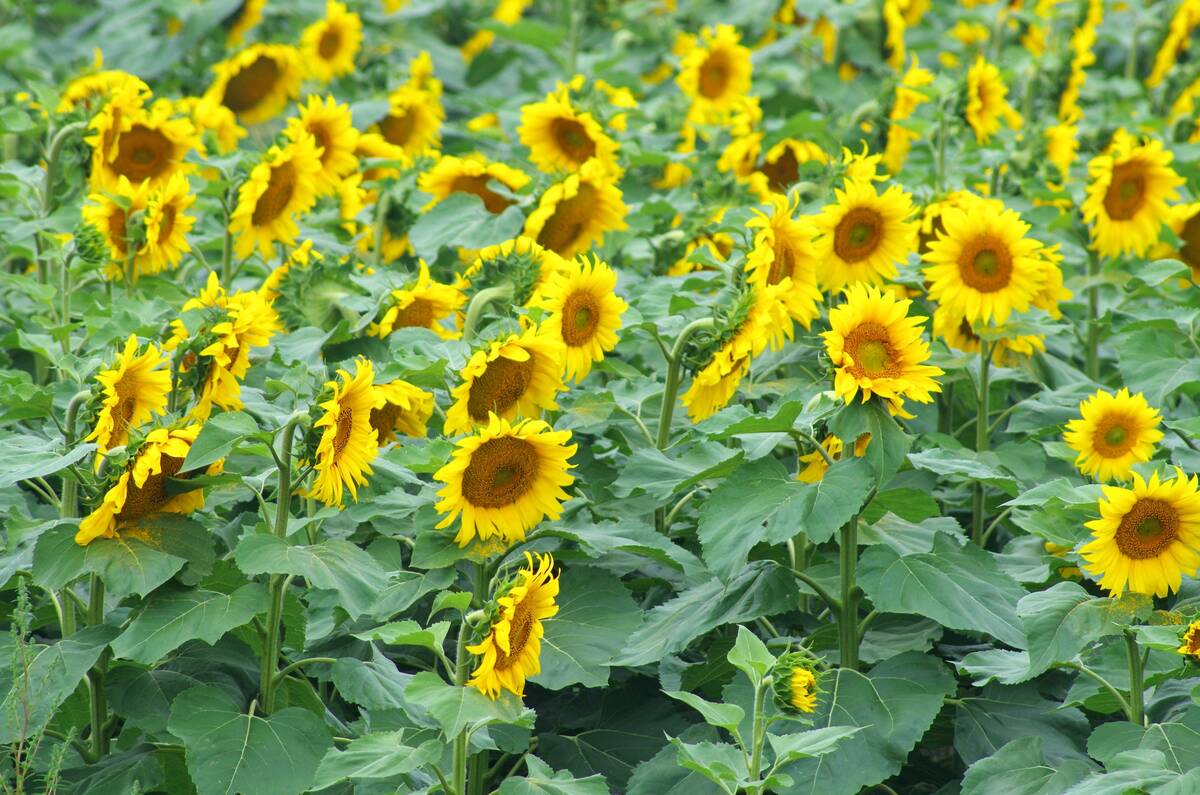Perhaps the most basic barometer of the state of farming in
Saskatchewan has taken another downward dip.
Farmland prices in the province slipped by 0.4 percent in the six
months ending Dec. 31, 2001, according to figures released last week by
Farm Credit Canada.
While that may not be a huge decline, it marks the sixth consecutive
six-month decline.
During that three-year period beginning in 1999, the value of farmland
in Saskatchewan declined by 8.8 percent, compared with increases of 2.5
Read Also

Made-in-Manitoba sunflower hybrid heads to market
Glacier FarmMedia – Manitoba’s confection sunflower growers will have a new seed option next spring that was developed specifically to…
percent in Manitoba, 14.9 percent in Alberta and 5.8 percent in British
Columbia.
“That’s just an indication of how poor the agricultural economy in the
province is in general,” said Bill Brown, an agricultural economist at
the University of Saskatchewan who studies farmland values.
The numbers also reflect the fact that Saskatchewan’s farm economy is
less diversified than its neighbours and therefore more dependent on
grain and oilseed prices.
About 25 percent of Saskatchewan’s gross farm receipts come from
livestock, said Brown, compared with 44 percent in Manitoba and 60
percent in Alberta.
“There’s not a lot of profit in growing grain, so the land values have
to adjust accordingly,” he said, adding there’s not much chance of a
turnaround in 2002.
“If we’re going into another year of drought, without substantial
increases in grain prices I would expect land values to be mediocre
again.”
The FCC farmland value report is based on a semi-annual appraisal of
245 properties across Canada, selected to represent the most prevalent
classes of agricultural soils in each census district. FCC appraisers
estimate market value using recent arm’s-length sales of comparable
land.
In the last six months of 2001, farmland values across Canada increased
by an average of 0.8 percent.
Quebec led the way with an increase of 4.8 percent, followed by Ontario
at 3.1 percent. Saskatchewan was the only province to register a
decline. Here’s what the FCC survey said about the four western
provinces:
- Manitoba – Land values increased marginally by 0.2 percent during the
latest six-month period. There was sustained demand for land in areas
of intensive livestock or special crops production. Values also
increased for pasture and forage land. In regions dominated by
traditional crops, prices were weak due to low commodity prices.
- Saskatchewan – The 0.4 percent decline reflected a cautious attitude
toward expansion, due to low commodity prices, reduced yields and
increased production costs. Areas suited to livestock attracted buyers
needing pasture and feed, supporting prices in those areas.
- Alberta – Land values rose by 1.6 percent, the 17th consecutive
increase. Demand remained strong for irrigated land as well as pasture
and forage land. In central and northern areas, land prices changed
little. Some livestock and grain producers looking to expand moved from
areas of high prices to areas of lower prices, which helped sustain
market demand. There was also demand for rural land by urban buyers.
- British Columbia – Land prices increased by just 0.1 percent. Slight
increases in the Okanagan Valley and Fort St. John regions were offset
by declines in other areas such as the lower mainland.
Brown said that while lower land prices reflect a poor farm economy and
erode an established farmers’ net worth and retirement income, they are
positive for those buying land, whether it’s beginning farmers or those
looking to expand. It also makes Saskatchewan an attractive market for
farmers from other provinces.
“They see us as the land of opportunity,” he said.
“Those that have cash, like a second or third son or daughter from a
ranching family in southern Alberta, can take their inheritance of a
half section and sell it and buy a two-section farm in Saskatchewan,
seed it down to pasture, put in 100 or 150 cows, and make a fairly
decent living off that.”














